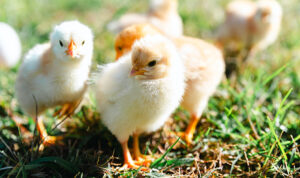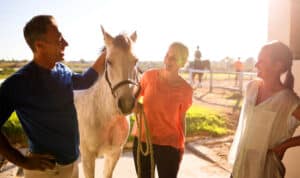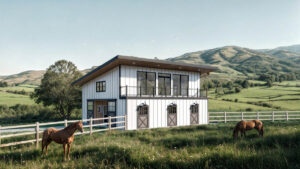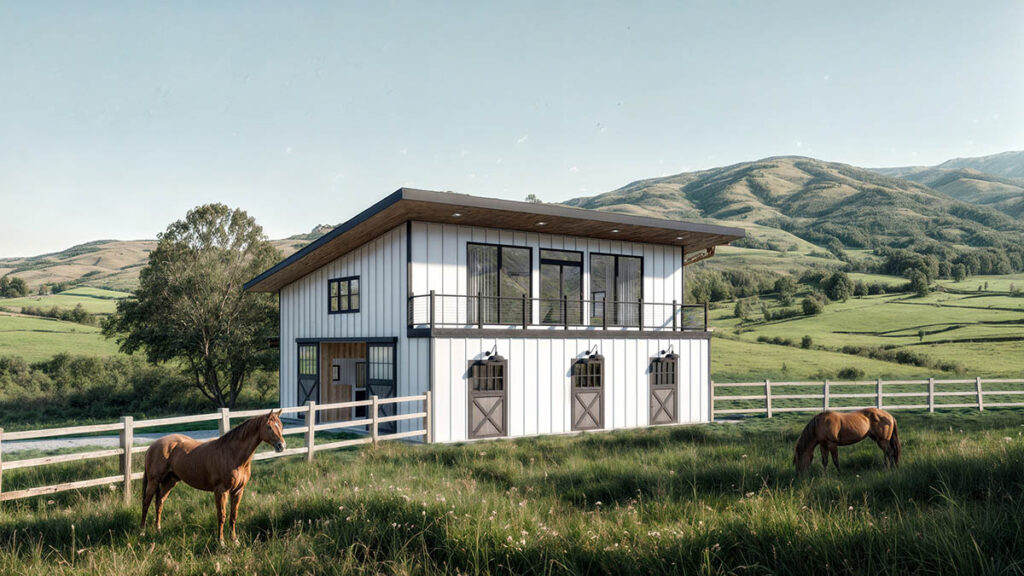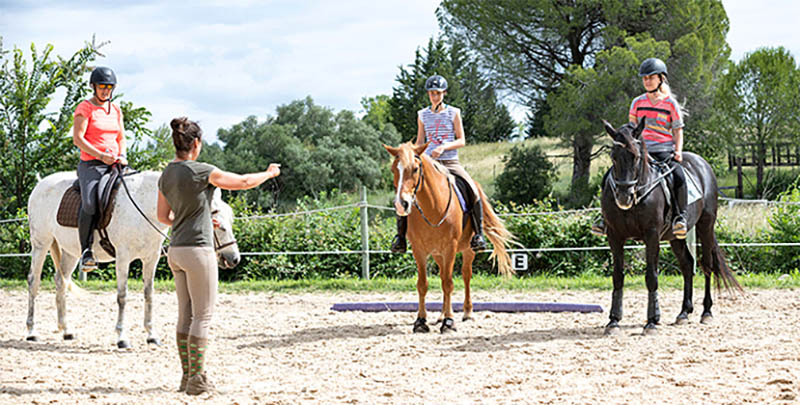Flooring is one of the most important choices you will make when designing a kennel for any purpose, whether a single-run kennel for your personal pet or a very large multi-run kennel for a commercial enterprise. There are a wide range of kennel floors for you to consider, each with their own benefits and drawbacks. Here are some dog kennel flooring ideas and the information you need to help you choose which one is right for you.
Types Of Dog Kennel Flooring To Consider
Tenderfoot Wiring
If you need to be able to clean a kennel without taking the dog out and dogs can’t be depended upon to go potty in an appropriate area, tenderfoot wiring may be the ideal choice for you. The plastisol surface is gentle on dogs’ feet and tends to maintain an even temperature.
Diamond-shaped gaps are rounded to allow urine and much of hard waste as well to pass through. Whatever remains can generally be easily sprayed down with a hose without water running across the entire floor of the kennel and getting the dog wet.
This flooring provides good traction so dogs won’t slip and slide. Since it is raised up, it offers good airflow, reducing the growth of mold and bacteria.
Potential Downsides
Dogs with very long nails or very small feet can get caught in the gaps. The airflow isn’t ideal for every situation. In cold climates or for dogs that are susceptible to drafts like dogs that are very old, ill, or young puppies, the air movement through the slots can be uncomfortable or even dangerous. The wiring is quite hard, which can be rough on joints over time.
Many people find that this kind of wiring isn’t as easy to clean as a solid sealed surface, since feces can be caught between the gaps. Whatever you put underneath the wiring is another expense to consider. While the underlayer doesn’t need to hold up to a dog scratching or biting, it does need to be sealed so that urine and feces can run over it without accumulating.
Tile
Tile kennel flooring has the advantage of being easy to install. Tiles for kennels should be made of high-density plastic resin which is quite durable to scratching and chewing. It can also offer a non-skid surface that controls temperature well.
Because it isn’t as hard as concrete or stainless steel, this kind of tile flooring is better on joints. It is easy to expand a tile section if desired or to replace individual tiles if needed.
Potential Downsides
While tile can be placed to nearly eliminate the gaps, there is still a gap that remains. This gap tends to trap debris and lead to bacterial growth and odor. While it may be possible to seal tile floors, this may undo the advantages of using the plastic resin and will be very expensive when you combine the cost of sealing with the cost of the tiles. Furthermore, tiles will need to be placed over something sturdy, generally a concrete base, which adds to the price as well. Tiles can’t easily be elevated and won’t provide as good of airflow as some other options.
Kennel Deck
Kennel decking is very similar to composite wood floors for an outside deck or patio. It has the advantage of looking very attractive, providing good airflow, and being raised up so dogs won’t end up lying in moisture.
Kennel decking also tends to maintain fairly neutral temperatures, generally not being too hot or cold. It is quite durable, unlikely to give in to the average dog scratching or chewing. It is generally pretty easy to clean by spraying down with a hose or pressure washer.
Potential Downsides
The gaps in between each slat of the kennel decking can accumulate grime, especially if your dog goes potty on the decking. It may be difficult to clean underneath the decking, so the kennel area can accumulate odors.
While kennel decking is quite durable, the gaps allow room for teeth and nails so a determined chewer or digger may be able to cause damage. These gaps also create a space where small paws or long nails may become snagged.
Kennel Deck
Concrete is a very popular choice for kennel floors because it is affordable, long-lasting, and durable. It provides good traction and is easy for most dogs to grip. Dogs cannot chew or dig through concrete and even the most intense efforts are unlikely to damage this kind of flooring. It is reasonably easy to clean and tends to stay cool as long as it is shaded, which is nice for hot climates. Concrete is a good base for many other types of kennel flooring and can also be used by itself.
Potential Downsides
Unfinished concrete is porous, which means that it will not come clean completely and can harbor bacteria, urine, and feces. Furthermore, concrete holds water, which means that when the kennel is sprayed down it will stay moist for some time.
While concrete is generally easy for dogs to grip, it can be very rough on their paws, leading to damage to the pads or nails. Concrete that is frequently moist can lead to bacteria buildup and infections in the paws.
Concrete tends to crack with temperature fluctuations. These cracks create places to accumulate debris and prevent thorough cleaning. Concrete is extremely hard, which can be very tough on your dog’s joints and lead to mobility issues earlier in life than would otherwise occur.
Sealed Concrete
Sealed concrete solves many of the problems of using raw concrete in your kennels. The slick surface prevents urine or moisture from soaking into the concrete, which keeps the kennel cleaner and dryer.
Sealant can also prevent temperature fluctuations from cracking the concrete. If the concrete does become cracked, sealant can be added to fill in the cracks and produce a sleek surface again.
Sealed concrete typically looks nicer than raw concrete and it won’t be rough on your dog’s paws the way raw concrete would be. Some types of sealant are not particularly durable and may give in to your dog scratching.
Potential Downsides
Sealed concrete doesn’t do anything to soften the concrete, so concrete will still be very hard on your dog’s joints. It tends to create a very slick surface without good grip, so dogs may tend to lose their footing on it. It also won’t do anything to regulate temperature.
Many types of sealant need to be reapplied regularly, which adds to the maintenance you’ll need to do to take care of your kennels. As sealant breaks down in between the applications, it won’t look very nice and will allow water and urine to seep into the raw concrete below.
Polyurea Floor Coating
Polyurea floor coating is an excellent treatment for a variety of flooring bases including wood, concrete, and more. It can be textured to provide great grip and thick enough to provide some cushioning from hard surfaces like concrete.
This type of coating is extremely durable, able to hold up to lots of traffic and dogs that try to dig into it. You will likely find that you don’t need to re-treat this type of flooring for many years. It tends to maintain temperature, neither being too hot nor too cold.
Polyurea floor coating comes in a variety of colors which can make it a very stylish option for your kennel. It is easy to install and dries quickly, so you can apply it and be using the kennel again in a matter of days.
Potential Downsides
While polyurea floor coating offers a softer, more joint-friendly surface than materials like concrete or steel, it can still be hard for some dogs. For dogs that like to lie on the floor rather than using a bed and older dogs, this flooring may not be as good a choice.
Epoxy
Epoxy coating can be an efficient coating for flooring like concrete or would. It can seal in the materials to keep dogs’ waste from soaking in. Epoxy is often quite affordable and comes in a wide range of colors to meet various needs. It generally isn’t very difficult to install.
Potential Downsides
Flooring that epoxy will be applied to needs to be very clean and dry in order for a bond to be established. It often takes a very long time, as much as several weeks, for epoxy to fully dry. Bubbles can form when epoxy is applied which can trap germs. Generally, epoxy is not textured, which means that dogs may slip and slide on it. It is laid in a fairly thin layer so it won’t do much to regulate temperature.
Stainless Steel
If you want very heavy-duty flooring for your dog kennel, stainless steel may be the way to go. This can be a good option for dogs that dig or chew at the flooring incessantly. Stainless steel is sleek and easy to clean so that bacteria and debris are very unlikely to accumulate. It can be laid down in such a way as to completely eliminate seams. Stainless steel can last for a long time when cared for properly.
Potential Downsides
Stainless steel is very slick and difficult for dogs to grip, so it can lead to slipping and falling. If water is allowed to be trapped on the surface of the stainless steel or if the steel is very frequently wet, rust may develop.
Stainless steel tends to have dramatic temperature fluctuations, getting very cold in cold temperatures and extremely hot in hot temperatures, particularly when in direct sunlight. It can also be expensive to apply and very heavy if you need to move it around to clean underneath it. Stainless steel is very hard, which can cause problems for your dog’s joints.
Rubber Covered Steel
Covering stainless steel with rubber solves many of the problems of using stainless steel. It significantly softens the steel so that it will be gentler on joints. It also provides grip so that dogs are very unlikely to slip and slide on it.
Rubber evens out temperature fluctuations in the stainless steel so that a more consistent temperature will be maintained. It is very easy to clean and won’t harbor bacteria or odors.
Potential Downsides
If you are choosing stainless steel because of destructive dogs, coating it with rubber may not be the best solution. Most dogs can destroy rubber coating by chewing or digging at it. Even if the coating is not completely destroyed, tears and gaps can develop which will then accumulate odor, bacteria, and debris.
Grid and Sand or Gravel

Many dogs love to lie in sand especially, and it generally does a pretty good job of regulating temperature. Gravel or sand are quite soft and easy on your dog’s joints. Water and urine can seep through the sand or gravel and through the grid structure below.
Spraying down the whole kennel with water regularly can dilute any urine that remains and cause it to drop through the grid.
Potential Downsides
Sand and gravel have a tendency to move around on the grid and get knocked out of the kennel, which can leave an exposed grid that has the risk of catching dogs’ paws or nails and is very uncomfortable to walk or lie on.
It is not possible to completely sanitized sand or gravel, so this is not an option for kennels where disease control is a consideration. While most dogs have no problem with sand, many do not like the feel of gravel.
Dogs that roll in the sand can become dirty with it, so it’s not an ideal option if having a clean dog out of the kennel is a goal. Some dogs ingest sand or gravel, which can make it an impaction risk.
Artificial Turf
Artificial turf can be a very attractive way to cover the outside portion of a kennel. It looks like grass and is very gentle on dogs’ feet and joints. Generally, a grid pattern with gravel or slanted concrete is laid below the artificial turf so that urine drains into the layer below. Artificial turf provides good grip so dogs are unlikely to slip and slide on it. It is also quite good for temperature regulation.
Potential Downsides
Dogs can destroy artificial turf quite easily. It can become a choking hazard or impaction risk for dogs who ingest it. It is not possible to thoroughly sanitize artificial turf, so it’s not a good option where disease control is an element of concern. Artificial turf may tend to harbor bacteria and odor as well.
Considerations in Kennel Flooring
Temperature Control
A dog’s paws are an important element of temperature control for their entire body, so the flooring they are standing or laying on is an essential consideration. Some types of flooring can fluctuate dramatically with external temperatures, while others remain relatively consistent.
If you live in a very cold climate, radiant heating can be installed to keep floors warmer. In hot temperatures, raised flooring that allows airflow, as well as fans and air conditioning, can keep dogs cool.
Waste Elimination
In most cases, solid waste will need to be picked up from kennel floors. Even in the case of tenderfoot wiring, which allows for waste to drop down through the flooring, it is best to remove solid waste if at all possible.
Therefore, it is a good idea to design kennels so that there is enough room to easily sweep solid waste into a pan or remove it with a shovel prior to hosing down the kennel.
Drainage
No matter what kind of flooring you choose, you will need to clean it by spraying it down with a hose or pressure washer from time to time. Therefore, it is very important that kennels have good drainage so that the wastewater has somewhere to go and dogs won’t be left standing in it.
Solid kennel floors should be slightly slanted so that water will move down towards a drainage area. Ideally, a drainage system will be in place to carry wastewater away so that smells won’t accumulate underneath the kennel.
Airflow
Airflow is important for temperature control in hot climates, but it is also a consideration in all kennels because it is important to eliminate the growth of bacteria and to reduce odors. Floors that are raised are the best way to provide sufficient airflow. Plenty of windows and fans in the kennel area that allow air to run over the kennel floor are also a very good idea.
Sanitizing
In some cases, just eliminating waste isn’t sufficient. You may need to feel confident that your kennels can be thoroughly sanitized. Completely sealed floors that can be sprayed down with anti-bacterial and heavy-duty cleaning agents are necessary when sanitation is an important element in your kennel.
Choosing the Right Kennel Flooring for Your Dog
Depending on your needs in a kennel, a number of different options may work for you. Attractive options like kennel decking can be ideal for dogs that are not extremely destructive in the kennel. When it is extremely important to thoroughly sanitize kennels and when dogs may be more likely to go potty in the kennel, sealed flooring like Polyurea Floor Coating may be your best option. Consider your needs, budget, and the options available to choose the right kennel flooring for your dogs.









